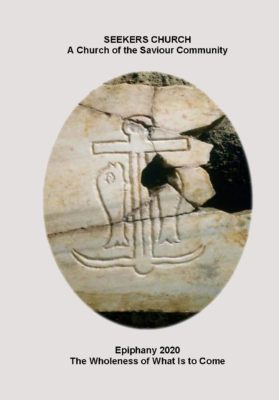
from catacomb of St Priscilla (Rome)
February 16, 2020
The Sixth Sunday after the Epiphany
This sermon starts with time travel. I liked last week’s lectionary better than this weeks, and Bokamoso sang and demonstrated it, but did not speak on it. So we are going back a week. “You are the salt of the Earth; but if the salt has lost its taste, how can saltiness be restored? “ This sermon is a shaggy dog story which will get back to this passage from Matthew after a detour through Palestine, Amsterdam, Palestine again and Australia. “You are the salt of the Earth; but if the salt has lost its taste, how can saltiness be restored?”
What does Banksy, the stencil peace and justice street artist have to do with the call of the Living Water mission group here at Seekers? Here we go!
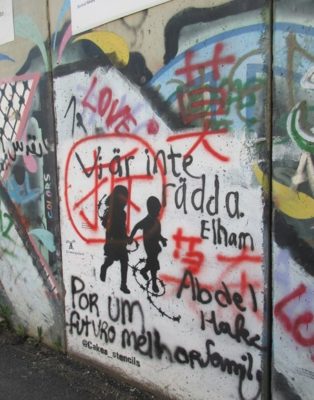
In 2015, Ron and I went to Israel, and toured with a guide who had access to the A and B areas of Israel, so we saw much of Palestine’s ancient lands, including Jericho, and Herod’s palaces in the western desert, but even a senior guide who was Israeli had no access to Bethlehem which is a C area, owned and controlled by Palestinians, with no Israeli access. As we were looking at ancient sites, modern sites, and I wanted to see Biblical sites, we hired a Palestinian guide to lead us through Bethlehem. We were driven to the wall around Bethlehem, walked through the special gate for foreign tourists, and met a car with our Palestinian guide on the other side of the wall. During our transit, I had been warned to look for Banksy stencils on the wall, which were the start of the use of the wall for political protest a couple of years earlier. As we were jostled, and feeling uneasy about the long lines of Palestinians waiting long hours to get out to jobs or hospital access, I took one photo, but noticed several other stencils, which I did not know the import of until later. In 2015, we were told there were few jobs for the people on this side of the wall, and that most tourists who did come to Bethlehem came in American evangelical tours who had foreign drivers, zipped in to go to the Church of the Nativity on Bethlehem Square, kissed the stone where the manger was supposedly located, and left. There was one shop which attracted tourist trade—a workshop where many generations of woodcarvers made nativity sets. Some buses stopped there on the way out, and we were dropped there to get a taxi back to Jerusalem (only 10 km, but so much religious and political distance away).
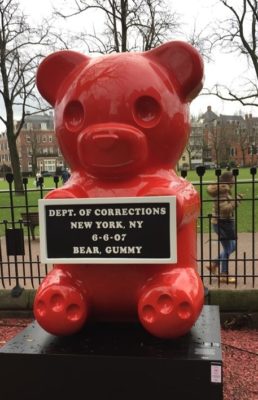
(Slide 3) In 2018, Ron and I took a Christmas Market cruise beginning in Amsterdam. The featured artists at the Museum of Contemporary Art in Amsterdam were Banksy and some younger street artists he wanted to encourage with this show.
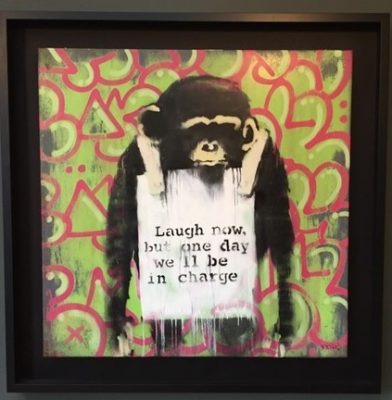
(Slide 4) They all had also collaborated with the museum to provide an interactive app on our cellphones that had us interacting with the figures in the stencils.
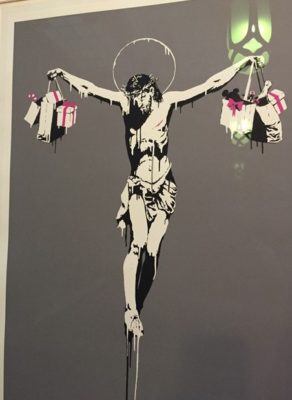
(Slide 5) The Jesus on the cross with shopping bags, I believe, put down his bags and smiled, but I can’t remember for sure—it was an amazing technical addition, but could not be captured to show later.
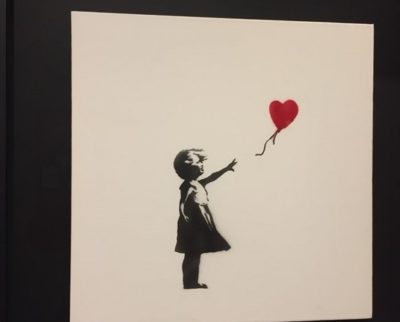
(Slide 6) The little girl with her heart as a balloon blowing away was an image I knew I had seen in Palestine, and the exhibit said it had been used in Banksy’s installations on various social action topics since the 1990’s and throughout the world.
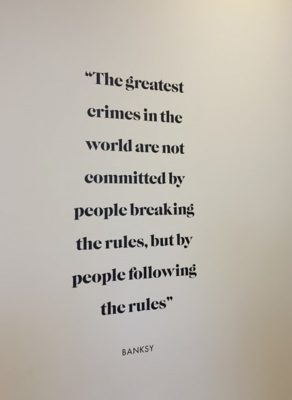
(Slide 7) The motto he has stenciled and which has been sold at Sotheby’s might be a Seekers motto. So I gained more insight into an artist who has worked hard to hide his identity, even from his family, and who has had meaningful comment on war, religion, economics (especially concerning British royalty and the commercialism of large corporations like Disney) and uses his fame and following to build understanding about the greatest injustices in the world.
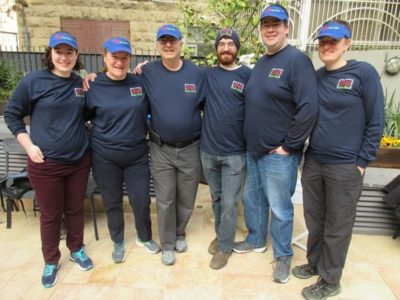
(Slide 8) The next chapter of this story is in February of this year. Our family went to Israel for Ron’s 65th birthday. We wore the street art of matching shirts and hats. American tourism was down, so unbeknownst to us, our Palestinian guide had used one of only 10 border crossings he was allowed a year to come and pick us up and bring us to Bethlehem. It would have been so easy to take a taxi, but I think he was worried we would be fearful to cross alone. The crossing was much harsher than four years before. Every bag was searched, mirrors under the car to look for bombs, and I was just so annoyed that Christo had a shaggy beard and needed a haircut—he reminded me of a depiction of a terrorist.
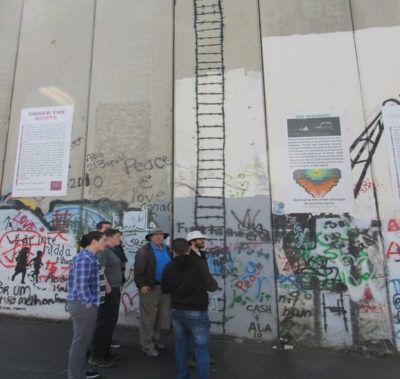
(Slide 9) We went first to see the wall. It had been augmented with 30’ slabs in 2015 – probably just after we had first visited. There were many types of stencils—some by Banksy, some by followers using the barbed wire motif. Just on the other side of the wall, you could have seen Jerusalem on a hill—now few buildings were high enough to see anything except the wall in the Northwestern direction.
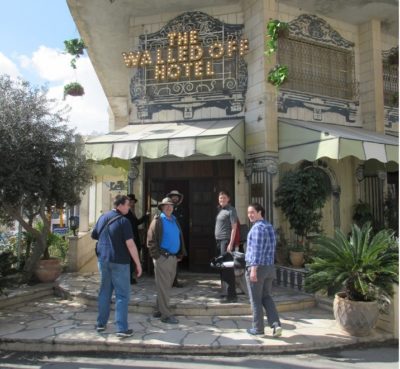
(Slide 10)But here was the amazing part. Banksy had decided, starting in about 2013, to focus his attention and money on Bethlehem. He had organized the building of the Walled Off Hotel, filled with puns and tromp d’oeil art. And while Americans haven’t flocked to the area, the hotel provided work for construction workers, hotel workers for the mostly British travelers, restaurant workers, museum curators and shop managers and he helped women nearby to spawn Banksy inspired protest art.
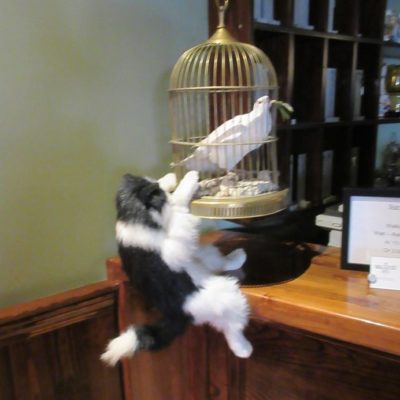
(Slide 11) Here are some shots of the lobby—a cat trying to kill the peace dove,
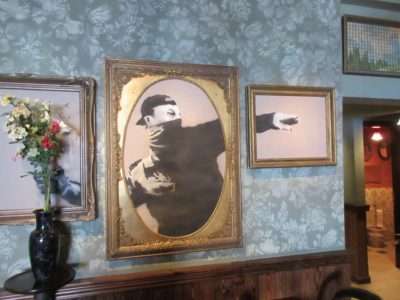
(Slide 12) a protester in three parts,
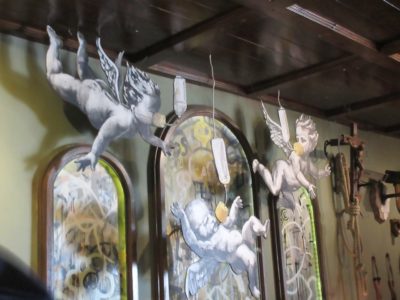
(Slide 13) Cupids suffering presumably from tear gas, and then, for a well-spent $15, which you could not want to skip, there was a Wall Museum in the back of the hotel.
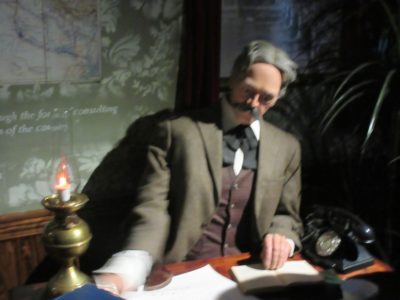
(Slide 14) The Wall Museum started with an old-fashioned animated figure of British Foreign Secretary Arthur Balfour declaring the establishment of a national home for the Jewish people in Palestine. There was a movie, which used the 1950’s film strip voice, showing the ebb and flow of territory over wars and struggles, and the encroachment of larger and larger walls.

(Slide 15) And Banksy had a poster declaring the wall as the world’s largest protest banner. I mentioned there was a museum shop—but not with t shirts and stickers.



Educational posters to help us understand the complicated impoundment of the people of Bethlehem and documents so we could check the details ourselves if we needed to were on sale.
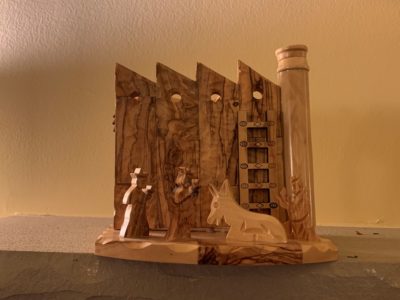
Then our guide took us to the gift shop Banksy had helped to establish for women artists.
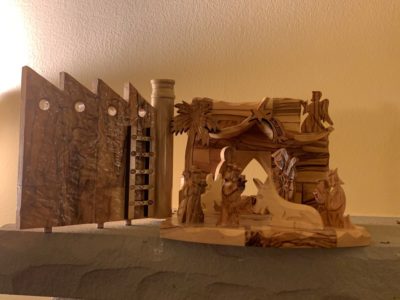
I bought this nativity set, and Banksy had given permission for the women to make mugs and bags with his stencils on it to help these women, who were formerly unemployed and destitute make a living and build support for Palestinian rights.
After seeing this museum, our family walked around some more—and some of the stencils were profound. Look at the peace dove perched on the dynamite plunger, with the child nearby.
Telling the story through art, with some humor and whimsy, seemed to move me more than reading books, or even hearing about specific lives—perhaps it was something to shake up my soul and my own creativity a bit.
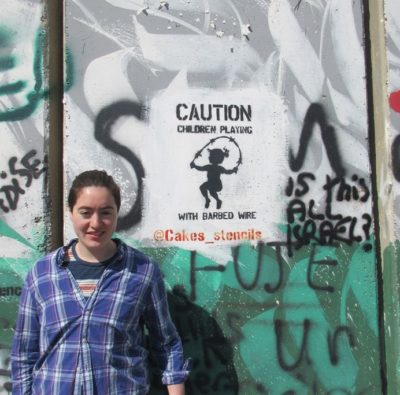
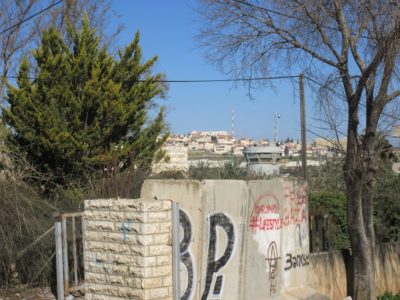
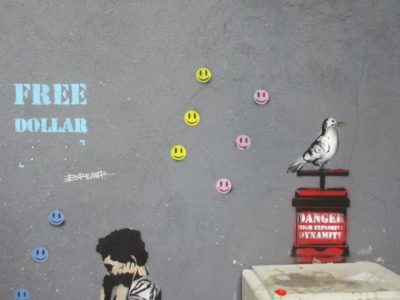

The final chapter occurred in Australia last fall. There was a pop-up Banksy exhibit in Sydney, and I went one day when Ron was teaching. Banksy’s former manager had pulled together many prints, sculptures and montages of Banksy’s art to raise money. And he told the story in a film at the beginning of the show that all of Banksy’s income and attention is now focused on Palestine. While he has participated in such shows as the Amsterdam one we saw, each show includes Palestinian images and description and the funds go to developing jobs and education to build the social fabric of Bethlehem. And after Christmas, I was looking at a new favorite book, Brilliant Maps for Curious Minds, and I was examining these two maps.

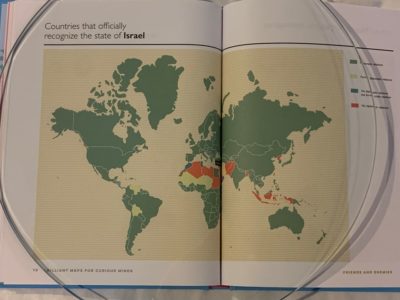
(Slide 24 and 25) Clearly, the art had made me more aware and able to seek out new information about a complicated international situation.
So this is how it this ties back to Living Water. This artist, Banksy, has decided to stay unknown from family and the public, so much that there are competing ideas of who he might be. He uses all his creativity and energy to create art that breaks our expectation and build the awareness that of course this situation is wrong and must be changed—no matter what situation he points to. He has turned away from the currencies of fame and fortune to change our attitudes about what is wrong with the world and how we support the status quo. He wants to put the saltiness back into us, the salt of the Earth. If the salt has lost its taste, what good is it—it should be thrown out and trampled under foot!
Putting saltiness back into our lives is what Living Water is supposed to help people in Seekers do. Many of you have turned away from typical cultural expectations to promise to center your lives, even if you don’t succeed all the time, to live in community, when we are in an individualistic society, and to be creative—not necessarily follow all the rules. And Living Water is supposed to help us go deeper in our spiritual lives to keep us enlivened in our creativity. I know most of our mission groups do this, but Living Water tries to keep the silent retreats and various classes in the School for Christian Growth going for this purpose. The images silent retreat leaders offer try to give us alternate ways to keep the Christian message alive and growing in us—not ossifying into rules. Every so often, we offer classes in SCG to try to deepen our disciplines of prayer, journaling, and the meaning of tithing and living in community. But our goal is to help keep us shining our lights through creativity and not hiding our light under a bushel. And I found, that the creativity of Banksy penetrated over time—similarly, some retreats have given me messages that took root and grew over time. This is what we want to give to our Seekers community.
We are in the process of revising our call, but we think it will be finalized soon. This is our current draft:
As a second-generation Church of the Saviour community, Seekers Church has drawn many people who are consciously engaged in ministry where they live and work. From our tradition, we know that this outward journey of service must be grounded in prayer and intentional reflection to sustain the Call which God has given to each member. Therefore, Living Water intends to support the inner life of all Seekers.
In John 4:10, Jesus said to the Woman at the Well, “If you knew the gift of God and who it is that is saying to you ‘Give me a drink,’ you would have asked and he would have given you living water.” We want to claim both our thirst and God’s promise of living water to those who ask.
Therefore, Living Water intends to support the inner life of all Seekers by:
- Coodinating two silent retreats for Seekers each year at Dayspring;
- Offering one class (or more) in the School for Christian Growth;
- Offering periodic workshops on related topics;
- Accompanying the elders in our group as they age.
Living Water meets weekly on Wednesdays at 1:45pm in northern Virginia.
- We practice traditional disciplines of prayer, study, spiritual reports and stewardship of time and money.
- We recognize and celebrate birthdays as spiritual milestones.
When it is finalized, we will put out a call to new members, but if any of you want to ask about it, Living Water members are Jean Adams, Marjory Bankson, Emmy Lu Daly, Nancy Lawrence and me.
And, by the way, do not murder, mend your grudges with your sisters and brothers in the church, do not commit adultery. Read the archaic descriptions of how to handle divorce, and I do not commend to you the idea of ripping out your right eye if it sins—otherwise, what is confession for? And, don’t swear or use the name of God in vain. That should catch us up for next week.